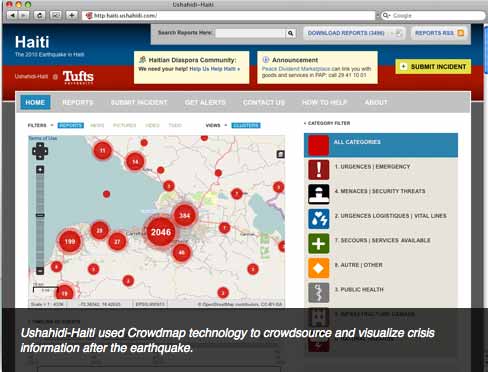Visualizing Crowdsourced Data with Crowdmap
Crowdmap is a tool for mapping crowdsourced information--information "outsourced" or gathered by a large community of individuals through an open call for participation.
This is a free service run by the team that built the crisis mapping software platform Ushahidi. Unlike the Ushahidi software, Crowdmap requires no downloads or server set up. Once you register at crowdmap.com, it takes about 5 minutes for your site to be created. You can then choose themes, edit categories and start receiving reports from the field.
Crowdmap (not to be confused with CrowdMap, the concept mapping web service) collects information from participants' cell phones (texts and emails) and news or other websites like Twitter and Facebook and aggregates the information into a single site dedicated to your group. Group members monitor the information and identify GPS coordinates for each report. The information is then illustrated with an interactive map and dynamic timeline.

Up to now, this new application has been used as a tool to map crises like hurricanes, earthquakes and war, as well as election results, wildlife migration patterns and business inventory information. Students at Tulane University used the software to map the Gulf oil spill. In a recent CCNMTL sponsored University Seminar: Crisis Mapping with Crowdsourcing, Patrick Meier, the director of crisis mapping and strategic partnerships at Ushahidi, described how this technology is used to help manage global crises. See the EnhancED article on Live Blogging Using CoveritLive for a description of Meier's presentation.


